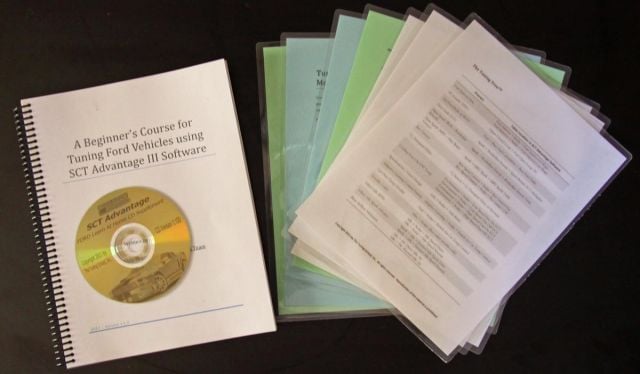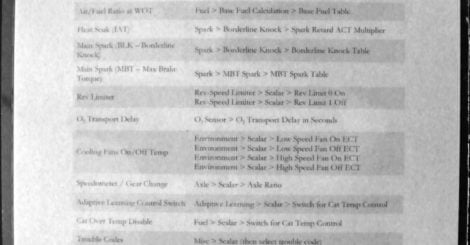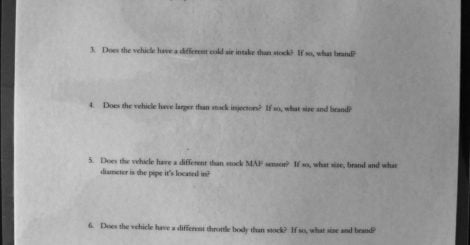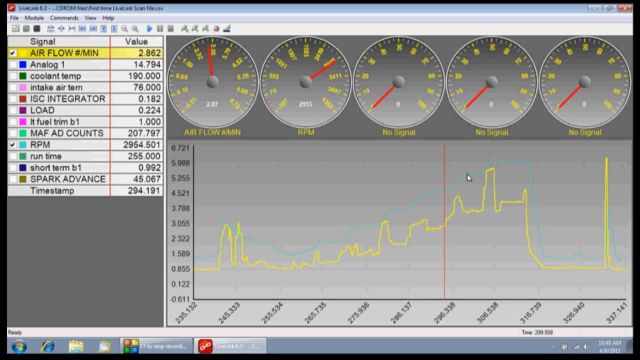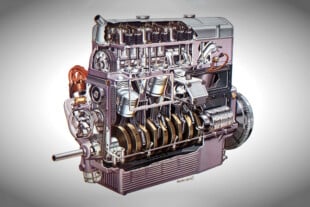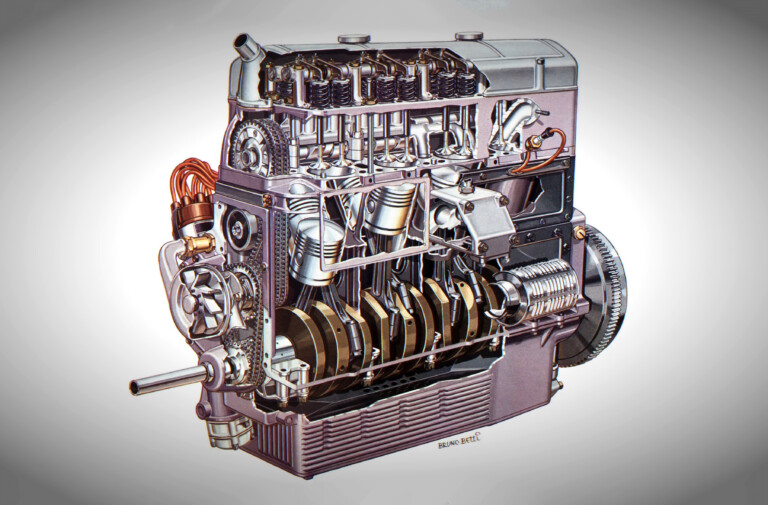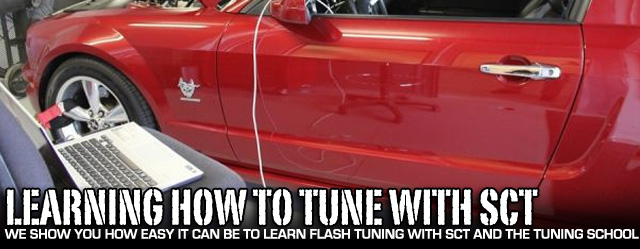
So you’ve been in this high-performance game for a lot of years now, working on and modifying your own cars, building them to the vision you see when you close your eyes at night. Taking engines apart, swapping transmissions and rear-end gears, putting headers on – you can do all of that. But if you’ve got fuel injection on your car, chances are that you can’t tune it – at least not in the traditional sense of changing timing and adjusting fuel curves.
That’s because the brain of the car prevents you from doing much more than turning a distributor or jacking with the fuel pressure – and that’s if you’re rolling around in a pre-’96 car. If your car has coil-on-plug ignition, you can only make the pre-programmed options you might find in a handheld tuner, but those are only good for a limited modification level. And if you’ve got a super- or turbocharged car you’re at even more of a disadvantage because of how critical tuning is on those vehicles.
Thankfully, those days are gone. SCT Performance and The Tuning School now offer this nifty learn-at-home kit for you enterprising tuners out there. For years The Tuning School has offered on-site training classes – that’s how many of the industry’s well-respected shop tuners in the industry got their start. But there are still folks out there who prefer to learn at their own pace and do their own thing, and that’s who this kit is aimed at. Since SCT offers both their dealer-level Advantage III software along with the Pro Racer Package as options to their customers, it only seemed natural for them to work with The Tuning School to put together a course so that owners could learn at their own pace.
This course was designed for consumers and shop owners to learn to tune vehicles using our Advantage III or Pro Racer Custom Tuning software. – Tim Roi, SCT Performance
We spoke with SCT’s Tim Roi, who explained, “It is a basic kit that teaches them the theory and tuning basics at home, without having to attend our in-house or remote training provided by the Tuning School.” They sent us a course packet to look over, and we came away thoroughly impressed with the volume of data and the level of detail covered in the materials. Since The Tuning School wrote the material and provides all of the in-house training for SCT, they directed us towards Bob Morreale.
Morreale has authored several courses on the subject of tuning, starting with his 1999 book, BM Computer Source Guide to Chip Burning, which was his effort at guiding first-time tuners through the rigors of making a Buick Grand National perform. Since then he’s written a number of new courses, and his fourteen years of tuning experience runs across the board from the aforementioned Grand Nationals to a F.A.S.T. EFI-powered big-block supercharged Willys and LS7 twin-turbo Corvettes along with a host of Fords. Along with a background in cylinder head porting and flow bench testing, Morreale has the experience to preach what he practices.
Opening the Books
The tuning course is well-laid-out, with a definite pathway to success, as Morreale has drawn on his classroom teachings to provide the at-home learner with a solid base to start from. The opening section deals with the basics of how a fuel injection system works, and some of the terms used (for those of you converting from carburetion with a kit car, for example) are broken down to make them easier to understand. In addition, the operations of loading the software onto your computer are covered, but since we assume most of you have those basics down we’ll leave it at that. After a quick segment on setting up the software and linking a wideband O2 sensor into your system, Morreale launches right into how to prevent your fast Ford from popping and snorting its way down the street.
Left - The Tuning Tree is designed to show you where in the SCT software particular adjustments are made. Right - This is the process for tuning on a bolt-on-style car.
We spoke with Morreale, and he explained how the process works. “When we create a course, it typically takes us about a year. What we’ll do is take a couple of vehicles here at The Tuning School, and tune the same vehicle 20 times or so, with about 100 different variations, until we figure out the right order. There is a correct order to perform all of the operations, and we need to make it so that the tuner can understand it. We’ll do all of the R&D, then write up the process, and our editor Mandy will handle putting all of the information together,” he explained. As Mandy is not a tuner whatsoever, Morreale feels comfortable that a course is on the right track when Mandy can understand all of the little details that are required.
By following the steps on the laminated cards, it permits you to work in stages to determine exactly where to head next during the tuning process. – Bob Morreale, The Tuning School
As part of the kit, The Tuning School has put together a compilation of information on laminated cards that’s designed to help the novice tuner through the process. In the workbook, there are sections that deal with naturally-aspirated cars and power-adder cars, and how the different levels of modifications will affect a tune.
Adjusting for Modifications
For example, the steps provided for a bolt-on style car takes you through the most popular options, like headers, gears, and cold-air intake systems, and explains how to use the value file from SCT to start the process. A value file is a file created by the engineers at SCT to most closely match the modifications the vehicle already has, and greatly simplifies the tuning process – it can be thought of as a starter tune. By using the thousands of tunes they have already created throughout the years, SCT is able to provide these with the software, and then the tuner needs to finish it off and get the tune correct for a particular vehicle.
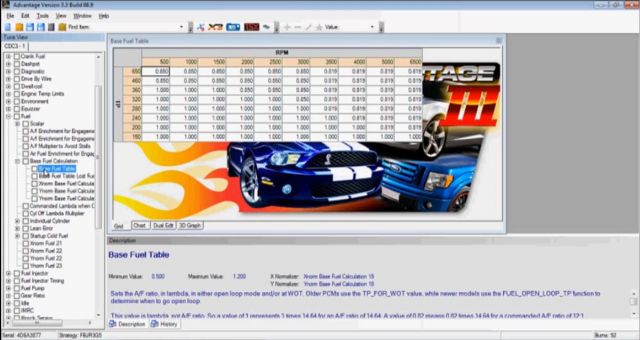
The base fuel table is where you set up the open loop and wide-open-throttle settings in the software.
The tuning tree card for a power-adder car looks a bit different, but starts out with the same basics – get the car’s minor modifications out of the way, and work on the idle and part-throttle tuning before heading into WOT adjustments. One of the items that is critical during this step is to make sure whether your value file has the correct load scale, as forced-induction vehicles will easily exceed the the built-in scale due to the added airflow from the super- or turbocharger. Most of the time the SCT value file will already be corrected for this, but just in case it’s not, you have to get it right or you’ll never be successful with the process. The reason for performing this operation is to gain greater resolution in the higher RPM ranges, where fueling and spark timing is critical on a forced induction vehicle.
How To Get Started
Not only do you get the course, but you also get a year of free support via email, phone, and a web forum that The Tuning School has set up for its clients. Also, for those of you who are looking to get deeper into tuning vehicles than the at-home course can offer, The Tuning School offers a number of different packages to the end-user. The Learn At Home package like we have sells for $449, while their in-person course runs $849. The in-person courses are held in various locations all around the world throughout the course of the year, and they also offer private two-day training sessions that run $2,500.
The live classes start out with the basics, much like the learn-at-home course does, but from there it’s right into the meat of the program. ”We like to make sure everyone’s on the same page, especially if they are a beginner. The classes start out by teaching how to get the software up and running, and then we go through how to read the scanner by using a real scan. We don’t do a lot of 8-hour lecture days, we’re much more hands-on, so once we get through that initial section, it’s right out to work. We try to help the tuner understand trends and what to look for, because that’s what makes a bad tuner – the person who ignores what the scanner is telling them about the condition of the vehicle. ”said Morreale. For those of you just starting out who are looking for more than a self-taught class, either the in-person or private options would seem to be a better bet, and the reasonable pricing gets you into the ballpark if you’re looking to become a tuner.
It might be good to let a professional take care of large tuning tasks until you become familiar with the process, making minor changes at the track. Tuning can seen like a daunting task as different vehicles like to be tuned specific ways, but with SCT Performance and the Tuning School, they can transform the biggest novice into a tuning pro.



